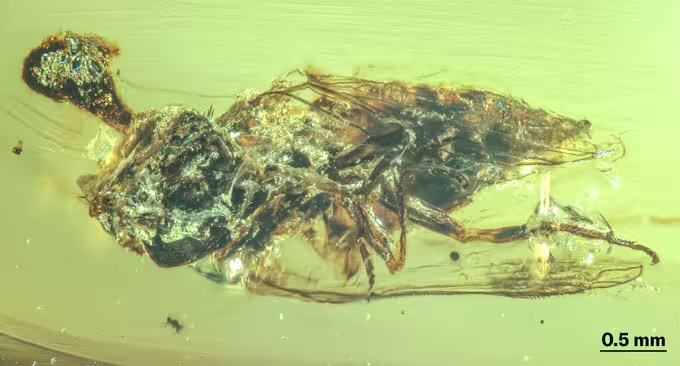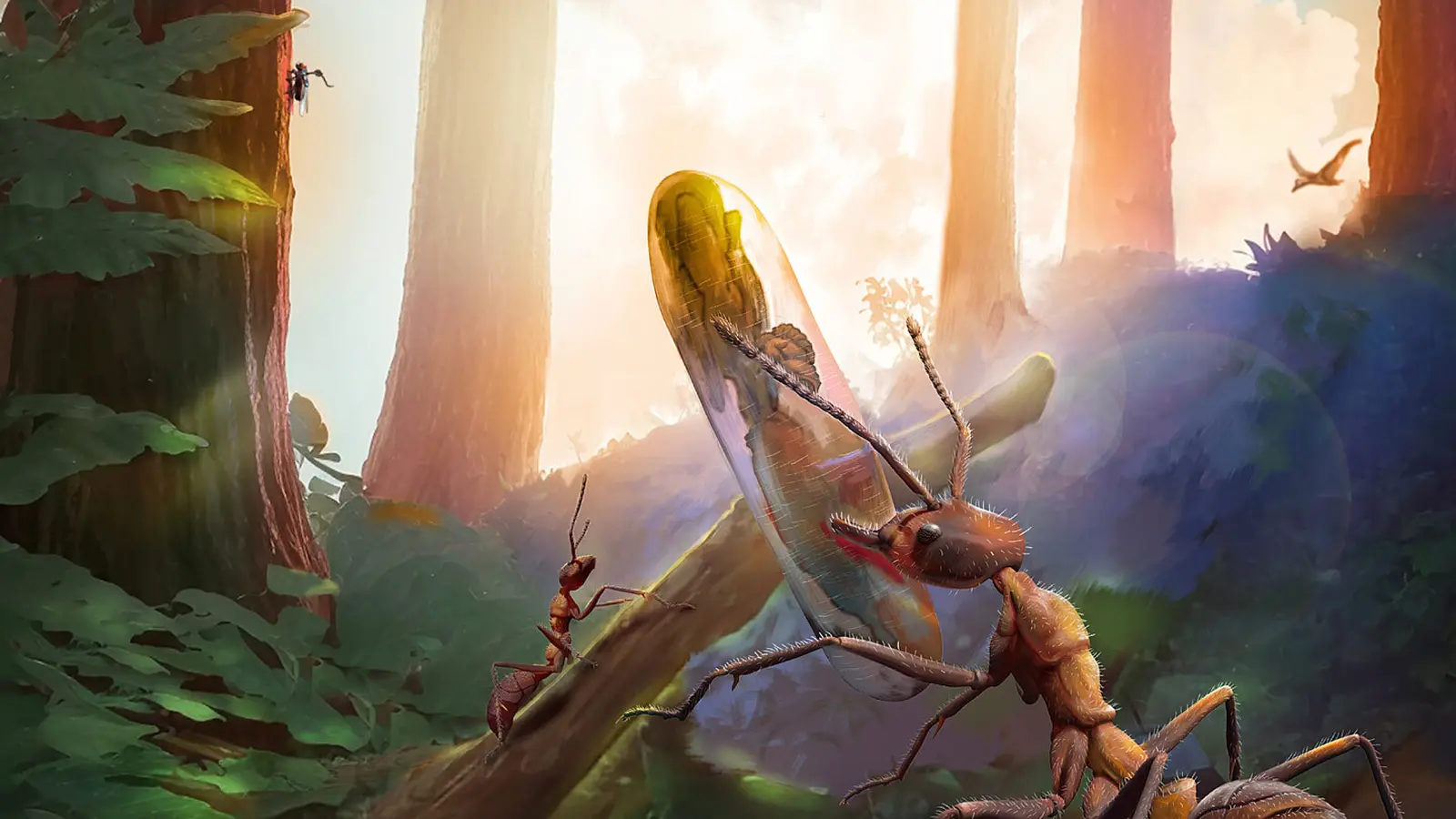5 Minutes
Ancient amber captures a gruesome parasitic relationship
Nearly 100 million years ago, a drop of tree resin preserved an extraordinary scene: a fungus erupting from the body of a young ant. That resin fossilized into amber, and modern analysis of the specimen provides fresh evidence that parasitic fungi of the genus Ophiocordyceps—often called “zombie fungi”—were manipulating insects by the mid‑Cretaceous. The discovery pushes back the known history of this host‑manipulating behavior, suggesting these fungi have been shaping insect ecology for far longer than previously documented.
What Ophiocordyceps does and why it matters
Ophiocordyceps (pronounced OH‑fee‑oh‑KOR‑dih‑seps) is a group of parasitic fungi that infects a wide range of arthropods, including ants, flies and caterpillars. In living systems researchers have documented how infected insects often leave their nest or burrow, climb to elevated positions, clamp their mandibles into vegetation and die in a posture that maximizes fungal spore dispersal. The fungus then grows a stalk or sporulating structure from the cadaver, releasing spores into the environment to infect new hosts.
Understanding when this ‘‘zombifying’’ behavior first evolved is critical for reconstructing co‑evolution between parasites and their insect hosts. Fossil evidence of fungi is exceptionally rare because fungal tissues are soft and seldom preserved. Finding an insect with fungal structures still protruding from its body is especially unusual—and scientifically valuable.
Discovery and analytical methods
The fossil ant was identified by paleontologist Yuhui Zhuang while examining amber collections at Yunnan University in Kunming, China. Initial visual inspection led to a surprising find: something protruding from the insect’s thorax. High‑resolution 3‑D imaging—micro‑CT scanning and digital reconstruction—revealed that the protrusion was a sporulating structure bearing spores whose morphology closely resembles those of modern Ophiocordyceps.
Following that chance find, the team searched other amber collections and located a fly similarly infested by fungal structures. Both specimens date to about 99 million years ago and were described in a paper published June 11 in Proceedings of the Royal Society B. Comparative morphology of the spores and the domed rupture through which they emerged indicate ancient affinities with contemporary Ophiocordyceps species.

Scientific context and evolutionary implications
These fossils suggest that ancestral Ophiocordyceps lineages were already exploiting multiple insect groups during the mid‑Cretaceous. Conrad Labandeira, a paleontologist at the Smithsonian National Museum of Natural History not involved in the study, notes that the findings align with a scenario in which parasitic fungi and their insect hosts have co‑evolved for tens of millions of years. The oldest known fossil ants date to roughly 113 million years ago; the new amber evidence implies fungal parasites may have been present soon after ants emerged as a major terrestrial group.
One of the specimens preserved an ant pupa—a non‑mobile life stage—indicating that behavioral manipulation would not explain every ancient infection. The authors propose that a nurse ant or colony member may have removed the infected pupa from the nest, inadvertently positioning the fungal sporocarp where it could release spores into the environment.
Expert Insight
Dr. Elena Marquez, evolutionary mycologist and science communicator, comments: "These amber specimens are a rare time capsule. Micro‑CT imaging gives us a window into ecological interactions from the Cretaceous that we normally reconstruct only from indirect evidence. The study is an important step in tracing how parasitic fungi have influenced insect evolution and community dynamics over geological time."
Key discoveries and future prospects
Key takeaways are that Ophiocordyceps‑like fungi infected diverse insect hosts 99 million years ago, that sporulation structures and spore morphology resemble those of modern species, and that amber combined with non‑destructive imaging can reveal soft‑tissue interactions long absent from the skeleton‑dominated fossil record. Future work will aim to expand the search in amber collections worldwide and apply molecular and morphometric tools where possible to refine evolutionary timelines for parasitic fungi and their hosts.
Conclusion
The mid‑Cretaceous amber fossils provide compelling evidence that ‘‘zombie’’ fungi of the Ophiocordyceps lineage were manipulating—or at least parasitizing—insects nearly 100 million years ago. These finds extend the deep-time record of host‑parasite interactions and underscore how exceptional preservation and modern imaging technologies can illuminate ancient ecological and evolutionary dynamics. For ants and flies of the Cretaceous, the story preserved in amber is a stark reminder of the long history of parasitism on Earth.
Source: snexplores


Leave a Comment